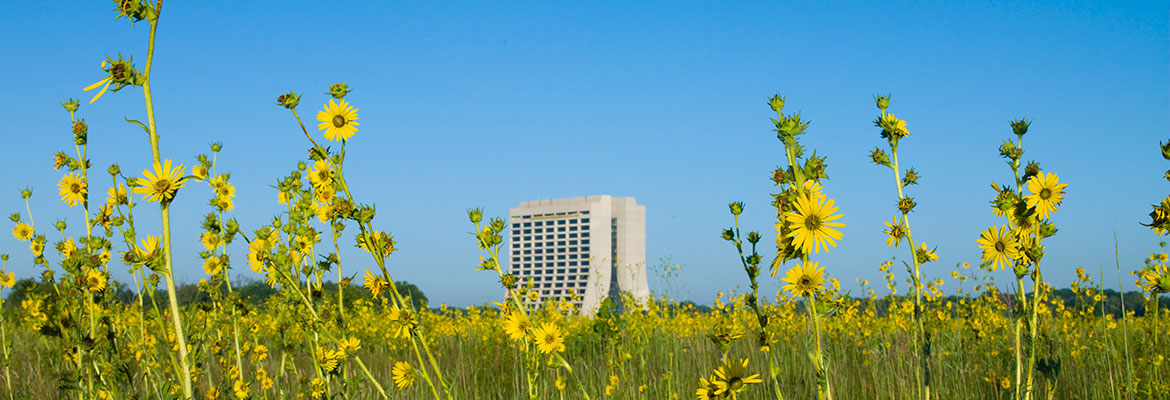Throughout the Midwest, most of the original tallgrass prairie ecosystem has been lost since European settlement. In Illinois, the “prairie state”, less than 0.01% of the 22 million acres of tallgrass prairie remains. This severe level of destruction of prairie led Dr. Robert F. Betz, a biologist from Northeastern Illinois University and Chicago native, to search for remaining acreages of this nearly extinct ecosystem. In the 1950s and 1960s, Betz found only very small parcels of degraded remnant prairie in railroad rights-of-way and pioneer cemeteries. It was during these field trips he began to envision a plan for recreating vast acreages of tallgrass prairie. When he learned that Fermilab, a new National Accelerator Laboratory on the outskirts of Chicago, was seeking advice on how to manage unused land on their site, he set up a meeting with the laboratory director, Dr. Robert R. Wilson. After meeting with Betz and hearing that this prairie restoration project may take 40 years or more to accomplish, Dr. Wilson famously stated, “If that’s the case, we should start this afternoon.”
The Fermilab Prairie Committee was formed and in 1975, the first 9-acre prairie was planted by Fermilab Roads and Grounds on land within the main accelerator ring. Seed for that planting was hand-collected by Betz and volunteers mostly from remnant prairie within a 50-mile radius of Fermilab. The conversion of fallow fields and agricultural lands to tallgrass prairie continued from 1975 until 2000, ending with 25 plantings totaling nearly 1,000 acres. Management and species enrichment of the Fermilab prairie plantings continues today.
As the restoration of tallgrass prairie progressed at Fermilab, the need to manage remaining ecosystems became evident. Thus, in the mid-1990’s, Fermilab’s Prairie Committee transitioned into the Ecological Land Management (ELM) Committee. The Fermilab ELM Committee is a Directorate-approved, chartered organization. The purpose is to provide sound ecological advice to the laboratory and an ELM plan to deliver recommendations on land management to Fermilab. The Fermilab ELM plan addresses Department of Energy requirements to manage federal lands as valued national resources and provides input for work plans that are to be carried out by the Roads and Grounds Department as an integral part of their task of managing the grounds of the laboratory. The ELM Committee is made up of Fermilab employees and consulting members including land managers, biologists and experts from other federal agencies, state and county government, not-for-profits and private companies.

